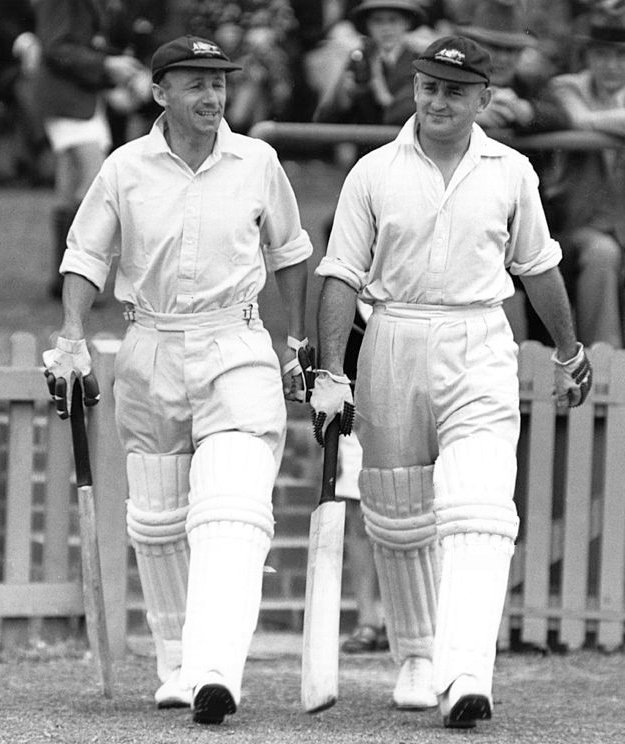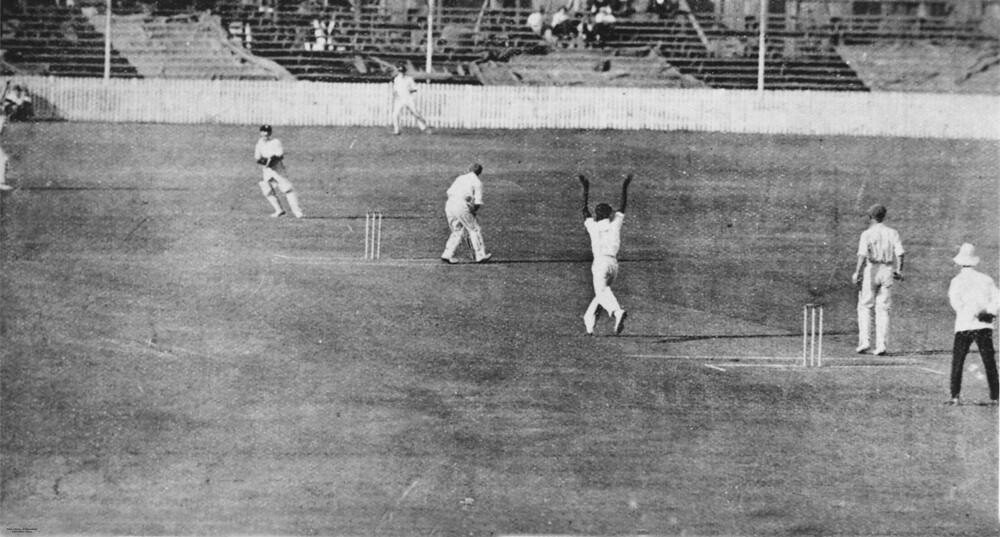Australian Ray Lindwall raised the standard for fast bowlers in the ten years after the Second World War. Ray Lindwall represented Australia in 61 Tests from 1946-47 to 1960. Raymond Russell Lindwall born on October 3, 1921, in Sydney and died on 23 June 1996 at the age of 74. Lindwall approached like a graceful robust wave, erupted a quick burst of speed and the positioning the arms at 45 degrees, and legs spread in the long stretch of the final stride.
When he was 11 years old, he watched the body line series, when English bowlers terrifying Australian bowler with beamer with wide eyes and arrogant way. At that time, he decided to become a fast bowler. He was not a flamboyant character like Keith Miller, but very much admired by people due to his phenomenal records.
He was a terrific athlete who could have excelled at several other sports had he not chosen cricket. Ray Lindwall could have easily been a rugby league international player when he ran 100 yards in just 10.6 seconds. The mechanics of his run-up and delivery were widely admired. Fred Trueman, who, like Richie Benaud (writing in the The 1970s), rated Lindwall the finest fast bowler he had seen, described Lindwall’s approach to the wicket as the most rhythmical of all.
Genuinely fast bowlers of earlier eras had rarely maintained their speed and menace for long in Test cricket but Lindwall did. No out-and-out quick bowler had previously taken even 100 Test wickets. He was not only becoming the first to 100 wickets but was the first past 200 as well and by the time of his last match in 1960 had 228 to his name (exactly half of them against England).
At that time only the fast-medium Alec Bedser of England, with 236, had taken more test wickets. Ray Lindwall in full cry was reckoned to be one of the great sights of the era. His action was not without its impurities. His arm was not as high as it might have been at the point of release, but this slanginess helped him make the ball leave the right-hander very late in the flight.
Once, Trevor Bailey said that he never encountered a genuine fast bowler who moved the ball in the air as much or as late as Lindwall. He further adds that he was also the most devastating exploiter of the new ball. By way of variation, Lindwall brought the ball back in off the seam.
Ray Lindwall’s ‘drag’, a method by which bowlers took advantage of the back-foot no-ball rule then in operation (no-balls were measured by where the back foot landed rather than the front foot) to steal some extra distance before release, was controversial but also perfectly common.
It gave batsmen less time to react than they have under today’s laws – and in Lindwall’s case, you needed every split second available. Ray Lindwall was the most feared fast bowler in the world in the later 1940s. With Keith Miller as his new-ball partner, Australia knew they had a combination of bowlers of rare power and menace, and neither of them was reluctant to use the bouncer.
They first came together properly in the Ashes series of 1946–47 – they had appeared in one Test before that against New Zealand but did not open the bowling – and Lindwall’s seven for 63 in the first innings of the final Test in questionable light was a chilling portent of torments to come.
When the sides met again in England 18 months later Lindwall made the new ball count in almost every innings and finished with 27 wickets at just 19.62 apiece, even though he played only a small part in one Test because of a strain. He bowled more than half his victims and when he shattered England’s first innings at The Oval with figures of six for 20 – England all out for 52, still their lowest total at home – and followed up with three for 50 in the second, seven of his nine victims had their stumps hit.
Bradman’s ‘Invincible’ won the Test series 4–0 and went through the entire tour unbeaten, Lindwall taking 86 wickets at 15.68 in all matches. The following year the South Africans prepared for the arrival of Lindwall and Miller by practicing against baseball pitchers, although as it turned out Lindwall was not at his fastest because of a groin problem.
He still took 12 wickets in the series at an average of 20.66 and claimed another 15 at 22.93 when England was trounced in Australia in 1950–51. It was then the turn of the West Indians to endure Lindwall and Miller on their own pitches. Lindwall captured 21 wickets to Miller’s 20. So dependable was his action and physique that Lindwall did not have.
What could be remotely described as a bad series with the ball between making his debut in 1946 and the tour of England in 1953. Hence, during that time his average never rose above 23. So accurate was he that even if he did not take wickets, he rarely went for runs.
 Ray Lindwall suffered a dip when England regained the Ashes in Australia in 1954–55 but within weeks was back among the wickets in the Caribbean, where he also scored one of his two Test centuries. Lindwall was a more than useful lower-order batsman although in what was generally a strong and successful side – Australia lost only nine of the 61 Tests in which he appeared – runs were rarely needed from him.
Ray Lindwall suffered a dip when England regained the Ashes in Australia in 1954–55 but within weeks was back among the wickets in the Caribbean, where he also scored one of his two Test centuries. Lindwall was a more than useful lower-order batsman although in what was generally a strong and successful side – Australia lost only nine of the 61 Tests in which he appeared – runs were rarely needed from him.
The hundred he scored in the third Test of the 1946–47 series at Adelaide made good what was already a strong position, but nevertheless the way he struck the ball was a fair indication of his class; coming off 90 balls. Although, it was at the time the second fastest scored by an Australian.
As a youngster, Lindwall was inspired by watching Harold Larwood bowl at Sydney during the Bodyline series and there was perhaps something similar in their styles. Lindwall was lucky in his mentors. He played his early cricket for the St George club in Sydney under the captaincy of Bill O’Reilly and Bradman took him under his wing during his first tour to England in 1948.




 Don Bradman and Stan McCabe 1938
Don Bradman and Stan McCabe 1938 Eddie Gilbert and Donald Bradman at the Woolloongabba
Eddie Gilbert and Donald Bradman at the Woolloongabba
